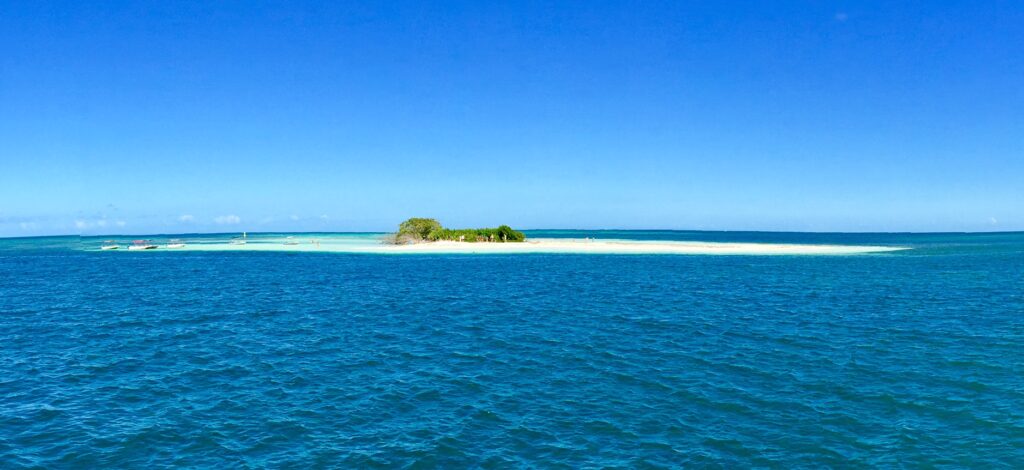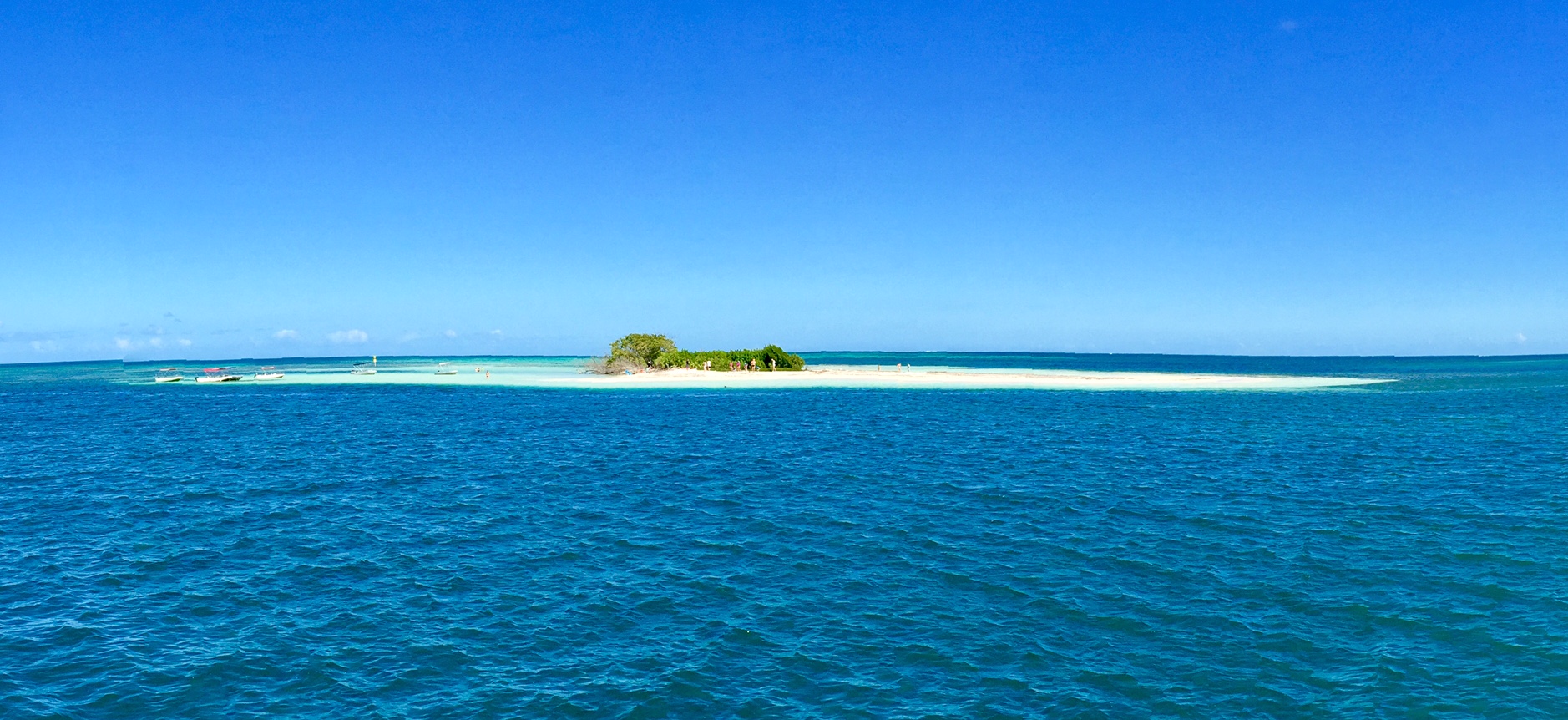
Exploring the Grand Cul-de-Sac Marin: Guadeloupe’s Natural Wonder
The Grand Cul-de-Sac Marin in Guadeloupe is more than just a geographical location; it’s a vibrant ecosystem, a historical landmark, and a breathtaking destination for travelers seeking natural beauty. This expansive bay, nestled between the islands of Basse-Terre and Grande-Terre, offers a rich tapestry of mangroves, coral reefs, seagrass beds, and small islets, making it a critical habitat for a diverse array of marine and terrestrial species. Understanding the significance of the Grand Cul-de-Sac Marin Guadeloupe is crucial to appreciating its ecological value and the importance of its preservation.
A Sanctuary of Biodiversity
The Grand Cul-de-Sac Marin serves as a vital nursery for many fish species, crustaceans, and mollusks. Its mangrove forests provide shelter and breeding grounds, while the seagrass beds offer food and habitat for marine turtles, manatees, and various invertebrates. The coral reefs, though facing challenges from climate change and pollution, still support a vibrant community of colorful fish and coral species. The area is a protected natural reserve, highlighting its environmental significance.
The Mangrove Ecosystem
Mangroves are the unsung heroes of the Grand Cul-de-Sac Marin Guadeloupe. These resilient trees thrive in the brackish waters, filtering pollutants, stabilizing shorelines, and offering refuge for countless creatures. They act as a natural barrier against storms and erosion, protecting the coastline and supporting the local economy. The intricate root systems of the mangroves create a complex habitat that supports a wide range of organisms, from juvenile fish to birds and crustaceans. Exploring the mangrove tunnels by kayak is a popular activity, offering a unique perspective on this essential ecosystem.
Coral Reefs: Underwater Gardens
The coral reefs within the Grand Cul-de-Sac Marin are biodiversity hotspots, teeming with life. While they have suffered from bleaching events due to rising sea temperatures, efforts are underway to restore and protect these delicate ecosystems. Snorkeling and diving in the clear waters reveal a kaleidoscope of colors, with vibrant corals, schools of fish, and other marine creatures. These reefs are not only beautiful but also play a crucial role in protecting the coastline from wave action and providing habitat for commercially important fish species.
Seagrass Beds: Underwater Meadows
Seagrass beds are another vital component of the Grand Cul-de-Sac Marin Guadeloupe ecosystem. These underwater meadows provide food and shelter for a variety of marine animals, including manatees, sea turtles, and numerous fish species. They also help to improve water quality by filtering sediments and absorbing excess nutrients. Seagrass beds are often overlooked but are essential for maintaining the health and productivity of the marine environment.
Historical and Cultural Significance
Beyond its ecological importance, the Grand Cul-de-Sac Marin holds historical and cultural significance for the people of Guadeloupe. For centuries, local communities have relied on the bay for fishing, transportation, and recreation. The area is dotted with small fishing villages, where traditional practices and knowledge have been passed down through generations. Understanding the cultural connection to the Grand Cul-de-Sac Marin Guadeloupe adds another layer of appreciation for this remarkable place.
A Legacy of Fishing
Fishing has been a way of life in the Grand Cul-de-Sac Marin for generations. Local fishermen use traditional methods to harvest fish, crabs, and other seafood, providing sustenance and income for their families. However, overfishing and habitat degradation have threatened the sustainability of these practices. Efforts are being made to promote sustainable fishing practices and protect the marine resources for future generations. Supporting local fishermen and purchasing sustainably sourced seafood is one way to contribute to the conservation of the Grand Cul-de-Sac Marin.
The Impact of Tourism
Tourism has become an increasingly important part of the economy in the Grand Cul-de-Sac Marin Guadeloupe. Visitors come to enjoy the natural beauty of the bay, explore the mangrove forests, snorkel in the coral reefs, and relax on the pristine beaches. While tourism can bring economic benefits, it also poses challenges to the environment. Sustainable tourism practices are essential to minimize the negative impacts of tourism and ensure that the Grand Cul-de-Sac Marin remains a healthy and vibrant ecosystem. [See also: Sustainable Tourism in Guadeloupe]
Threats and Conservation Efforts
The Grand Cul-de-Sac Marin faces numerous threats, including pollution, climate change, habitat destruction, and overfishing. Pollution from agricultural runoff, sewage, and industrial activities can degrade water quality and harm marine life. Climate change is causing rising sea temperatures, which leads to coral bleaching and other impacts. Habitat destruction from coastal development and dredging can destroy critical habitats such as mangroves and seagrass beds. Overfishing can deplete fish stocks and disrupt the balance of the ecosystem. Conservation efforts are crucial to address these threats and protect the Grand Cul-de-Sac Marin Guadeloupe for future generations.
Combating Pollution
Reducing pollution is essential for protecting the health of the Grand Cul-de-Sac Marin. This involves implementing stricter regulations on agricultural runoff, improving wastewater treatment, and reducing industrial pollution. Educating the public about the importance of responsible waste disposal is also crucial. By working together, we can reduce the amount of pollution entering the bay and improve water quality for marine life.
Mitigating Climate Change
Addressing climate change is a global challenge, but there are actions that can be taken locally to mitigate its impacts on the Grand Cul-de-Sac Marin. This includes reducing greenhouse gas emissions, promoting renewable energy, and restoring coastal habitats. Mangrove restoration can help to sequester carbon dioxide from the atmosphere and provide a natural buffer against rising sea levels. Supporting policies that promote climate action is also essential. [See also: Climate Change Impacts on Caribbean Ecosystems]
Protecting Habitats
Protecting and restoring critical habitats such as mangroves, coral reefs, and seagrass beds is essential for maintaining the health of the Grand Cul-de-Sac Marin. This involves establishing protected areas, implementing sustainable coastal management practices, and restoring degraded habitats. Mangrove restoration projects can help to stabilize shorelines, improve water quality, and provide habitat for marine life. Coral reef restoration efforts can help to rebuild damaged reefs and promote coral growth.
Promoting Sustainable Fishing
Sustainable fishing practices are essential for ensuring the long-term health of fish stocks in the Grand Cul-de-Sac Marin. This involves implementing fishing regulations, promoting sustainable fishing methods, and educating fishermen about the importance of responsible fishing. Establishing marine protected areas can help to protect fish spawning grounds and allow fish populations to recover. Supporting local fishermen who practice sustainable fishing is also crucial.
Visiting the Grand Cul-de-Sac Marin
For those planning a trip to Guadeloupe, a visit to the Grand Cul-de-Sac Marin is a must. Numerous tour operators offer guided excursions that allow visitors to explore the mangroves, snorkel in the coral reefs, and learn about the local ecosystem. Whether you’re interested in birdwatching, kayaking, or simply relaxing on the beach, there’s something for everyone to enjoy. When visiting, remember to respect the environment and follow responsible tourism practices. Choose eco-friendly tour operators, avoid using single-use plastics, and dispose of waste properly. By being a responsible traveler, you can help to protect the Grand Cul-de-Sac Marin Guadeloupe for future generations.
Activities and Attractions
- Mangrove Tours: Explore the intricate mangrove tunnels by kayak or boat.
- Snorkeling and Diving: Discover the vibrant coral reefs and marine life.
- Birdwatching: Observe a variety of bird species in their natural habitat.
- Beach Relaxation: Enjoy the pristine beaches and crystal-clear waters.
- Island Hopping: Visit the small islets scattered throughout the bay.
Tips for Responsible Tourism
- Choose eco-friendly tour operators.
- Avoid using single-use plastics.
- Dispose of waste properly.
- Respect the local environment and culture.
- Support local businesses and communities.
Conclusion
The Grand Cul-de-Sac Marin Guadeloupe is a natural treasure that deserves our protection. Its rich biodiversity, historical significance, and cultural value make it a unique and irreplaceable ecosystem. By understanding the threats it faces and supporting conservation efforts, we can ensure that this remarkable place remains a vibrant and healthy ecosystem for generations to come. A visit to the Grand Cul-de-Sac Marin is an unforgettable experience that will leave you with a deeper appreciation for the beauty and fragility of our planet. The future of the Grand Cul-de-Sac Marin depends on our collective actions. Let’s work together to protect this natural wonder for the benefit of all.

